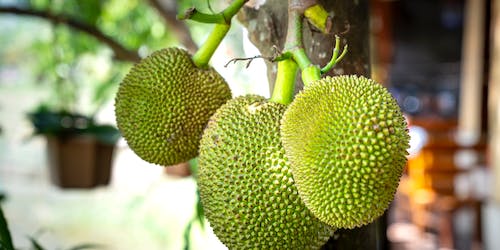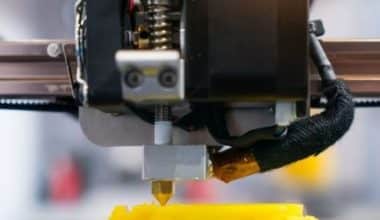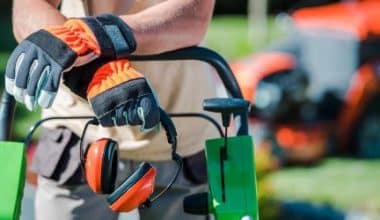Breadfruit is a tropical fruit that is widely utilized in many traditional cuisines worldwide. It is not only delicious but also very nutritious, as it contains a lot of carbohydrates, fibre, and vitamins. Breadfruit plants and trees are also beneficial to the environment because they are low-maintenance and require little water.
This article is for you if you want to grow breadfruit trees in your garden and eventually turn it into a company. In this essay, we will walk you through the breadfruit propagation process step by step.
Introduction To Breadfruit Propagation: Why Grow Breadfruit Trees?
Breadfruit is a tropical tree native to the Pacific Islands that is now planted in many tropical places worldwide. The tree bears a huge fruit that is high in nutrients and may be utilized in a wide range of cuisines, from savoury to sweet. Breadfruit trees are also highly hardy and require minimal care, making them an excellent alternative for anyone wishing to cultivate their own food.
However, the advantages of cultivating breadfruit trees extend beyond the wonderful fruit they yield. Breadfruit trees are also beneficial to the environment because of their ability to trap carbon and enhance soil quality. Furthermore, the trees give shade and can operate as a natural windbreak, which benefits other crops and cattle.
Growing breadfruit trees is also culturally significant, as the tree has long been an important element of many Pacific Island civilizations. You may connect with this rich cultural history and help preserve this crucial aspect of our shared legacy by cultivating your own breadfruit tree.
We will walk you through the breadfruit propagation process, from selecting the correct kind of trees to planting and caring for your new sapling, in this step-by-step guide. This book will provide you with all the information you need to successfully cultivate your own breadfruit tree and enjoy the many benefits it has to offer, whether you are an expert gardener or a beginner.
Benefits of Breadfruit Farming In Nigeria
Some of the several advantages of starting a breadfruit farming business in Nigeria include:
- Breadfruit is high in vitamins and minerals such as vitamin C, potassium, and fibre, all of which are necessary for optimum health.
- Breadfruit is a drought-resistant crop, making it appropriate for cultivation in locations with little rainfall.
- Breadfruit plants produce a lot of fruit, with one tree producing up to 200 fruits per season.
- Breadfruit plants are low-maintenance and require little attention.
- Breadfruit trees are noted for improving soil quality due to their deep roots, which can break up compacted soil and increase drainage.
- Breadfruit cultivation is a sustainable farming strategy that contributes to environmental balance.
- Breadfruit is a staple meal in many African countries, and breadfruit growing can help to improve food security by boosting crop availability.
- Breadfruit cultivation can be a source of income for farmers, particularly in rural locations where other sources of revenue may be restricted.
- Breadfruit has been discovered to have therapeutic characteristics such as decreasing inflammation and curing diabetes.
- Breadfruit can be eaten in a variety of ways, including roasted, boiled, or baked, and it can also be used to produce flour, chips, or bread.
Types Of Breadfruits Used For Breadfruit Farming In Nigeria
Breadfruit farming is the commercial cultivation of many breadfruit types. Breadfruit varieties grown in Nigeria and Africa include:
- Artocarpus altilis: The most prevalent breadfruit species in Nigeria and other African countries. It is spherical and has green or brownish skin.
- Artocarpus camansi: This breadfruit variety is widely planted in the Philippines and other Asian nations. It is round in shape and has green skin.
- Artocarpus mariannensis: This breadfruit is native to the Mariana Islands and Micronesia. It is spherical and has green or yellow skin.
- Artocarpus integer: This breadfruit variety is prevalent in Thailand and other Southeast Asian nations. It is spherical and has yellow or green skin.
- Artocarpus heterophyllus: Also known as jackfruit, this variety of breadfruit is produced in Nigeria and other African countries. It is huge and oblong in shape, with green skin and a spiky surface.
- Artocarpus sericicarpus: A round or oval breadfruit with green skin that is often found in Indonesia.
Each of these breadfruit varieties has a distinct flavour, texture, and nutritional value, making them appropriate for a variety of breadfruit farming operations.
How to Begin Growing Breadfruit in Nigeria
To begin your breadfruit cultivation in Nigeria, follow the steps below:
#1. Select a Breadfruit Genus
Prior to growing, decide on and select the exact breadfruit genus of interest. Your choice should not be haphazard. Treculia Africana—African breadfruit—is the most adapted genus in Nigeria. Cultivating a genus like a jackfruit would require a lot more labour and attention. Treculia Africana—a perennial plant that takes 3-5 years to mature—is sought after by most Nigerians for its tasty seeds.
#2. Date of Planting
Treculia Africana, like most breadfruits, requires a lot of water. It would not survive in other environmental circumstances, such as drought. From March to June is the optimal time to put seeds or root cuttings. During these months, the temperature ranges from 21 to 35 degrees Celsius, which is ideal for young plants.
#3. Selection and Preparation of Land
Any farmer considering breadfruit farming must assess the size and type of land available for cultivation. Some northern states, for example, have minimal yearly rainfall and are experiencing drought. Such locations should be avoided.
Forested regions are ideal during the early phases of development, but mature trees demand full sunshine. The annual rainfall on the chosen land must range between 1,250 and 3,000 mm. Create a land with water-retentive, fertile, and deep soil by mapping, clearing, and tiling it. Every year, fertile soil and favourable ecological conditions produce seeds weighing no less than 120kg per tree. A hectare of land would produce 6-10 tonnes of seeds every year.
The soil should be adequately prepared by ploughing it into a smooth texture. To improve fertility, weeds should be removed and organic manure supplied.
#4. Method of Propagation
Seedlings are planted straight into tilled soil or sown in plant pots. Other propagation methods include employing root cuttings or root shoots from established trees. Trees or man-made shadows should partially shade young plants.
#5. Maintenance
- Fertilize the tree base with a 7.10.15 N.P.K ratio.
- Irrigate soils when they start to lose moisture or when the weather turns bad.
- Bordeaux 1% boom spray to check for rotten fruit disease.
- Weed management should be used both before and during planting.
#6. Harvest
Breadfruit growth rates are determined by soil type, propagation methods, and environmental variables. If all or part of the conditions are favourable, the perennial plants can reach maturity in 2-4 years. The trees typically give fruit 3-6 years after planting. Harvesting should take place one week after blossoming. Harvesting is typically done by hand or with a sickle.
The seeds are dried, kept, and sold at local markets after being harvested, or they are processed into flour or oil.
Breadfruit Processing and Packaging in Nigeria
After you’ve finished farming, the next stage is to harvest and package your crops so they can be sold at the market. The entire procedure includes:
- Harvesting: Breadfruit is collected when it is fully mature and ripe. The fruit should be firm to the touch and not too soft. It is critical to handle the fruit with care to avoid bruising or injuring it.
- Washing: The breadfruit is properly cleaned with clean water after harvesting to eliminate dirt, dust, and other pollutants.
- Peeling: The outer skin of the breadfruit is removed to reveal the delicate and creamy meat inside. It is critical to remove the stem and any seeds from the fruit.
- Slicing: Depending on the ultimate result, the breadfruit is next sliced into desired sizes and shapes.
- Drying: The sliced breadfruit is dried at a low temperature in a dehydrator or oven to remove moisture and preserve it for a longer shelf life.
- Packaging: To keep the dried breadfruit from moisture, air, and pests, it is placed in airtight bags or containers. The name, date of manufacture, and any other pertinent information should be labeled on the box.
- Storage: Breadfruit should be stored in a cool, dry place away from direct sunlight.
Farmers can produce and package breadfruit for local consumption or export by following these steps. Proper processing and packaging can ensure the product’s quality and safety.
Types of Equipment and Tools Used in Nigeria’s Breadfruit Farming Industry
The following equipment can be used to achieve breadfruit farming:
#1. harvesting machinery
The first stage in breadfruit processing is to harvest the fruit from the tree. Harvesting tools such as ladders, picking poles, and trimming saws can be used to gather the fruits safely and efficiently.
#2. Cleaning supplies
After harvesting, the breadfruits must be washed to remove any dirt, debris, or toxins. This can be accomplished by using a washing machine or a large basin filled with clean water.
#3. Peeling apparatus
Before breadfruit can be processed into various goods, it must be peeled. Peeling can be done manually with a knife or on a larger scale with a motorized peeler.
#4. Cutting and slicing tools
After peeling, chop or slice the breadfruit into smaller pieces for future processing. This can be accomplished with a sharp knife or a mechanized slicer.
#5. Equipment for drying
Breadfruit can be dried in a variety of ways, including sun-drying, oven-drying, and dehydration machinery. In Africa, sun drying is the most popular method.
#6. milling machinery
A milling machine can be used to grind dried breadfruit into flour. After that, the flour can be used to make bread, cakes, and other baked goods.
#7. Packaging supplies
Finally, processed breadfruit goods can be packaged in a variety of packing materials such as bags, cartons, or containers.
It is crucial to note that depending on the amount of production and the intended result, the specific equipment utilized for processing and packaging breadfruit may vary. Furthermore, proper food safety and hygiene measures should be followed during the processing and packing processes.
The Breadfruit Farming Business’s Target Market in Nigeria or Africa
Breadfruit’s target markets in Nigeria and Africa include:
#1. Local customers
Breadfruit’s key market in Nigeria and Africa is local consumers who eat the fruit as a staple diet. Breadfruit is a traditional crop in many African countries, and both ripe and unripe versions are commonly used as a starchy food.
#2. Industries involved in food processing
Breadfruit is a versatile fruit that may be used to make a variety of foods, including breadfruit flour, snacks, chips, and soups. Breadfruit can be used as an ingredient in food processing companies in Nigeria and Africa, making it an appealing market for growers.
#3. Markets for exports
Breadfruit has a high export potential, especially in nations with big African diaspora populations, such as the United States, the United Kingdom, and Canada. The adaptability and nutritional content of the fruit make it a desirable product in various markets.
#4. Animal feed manufacturing
Breadfruit can also be used as animal feed, particularly for poultry and pigs. As a result, another potential market for breadfruit in Nigeria and Africa is the animal feed business.
Challenges Of The Breadfruit Farming and Production Business
There is a chance that you will experience certain difficulties while farming, and some of the most prevalent ones to watch out for are:
- Limited Awareness: Breadfruit farming is not generally known in Nigeria or Africa, which limits farmers’ and consumers’ awareness and knowledge of the crop’s potential.
- Limited Research: Breadfruit farming has received little research, limiting its development and commercialization possibilities.
- Seasonal Availability: Breadfruit is a seasonal crop that is only available at particular seasons of the year, restricting its availability and marketability year-round.
- Pest and Diseases: Breadfruit trees are sensitive to a variety of pests and diseases, which can impair crop yields and quality.
- Climate Sensitivity: Breadfruit trees require specific climate conditions to thrive, and variations in weather patterns can have an impact on crop development and productivity.
- High Capital Cost: High initial capital investment: Starting a breadfruit farming business necessitates a significant initial financial investment, which might be difficult for small-scale farmers.
- Shortage of Infrastructure: Breadfruit farming has a shortage of infrastructure, including storage facilities and transportation, which can limit its marketability.
What is Breadfruit Called in Igbo?
It is known as Ukwa. It’s one of the best Igbo dishes you shouldn’t miss.
Is Ukwa a Protein or Carbohydrate?
Ukwa contains a lot of protein (17-20%), carbs (40%), oil (10%), and minerals like magnesium, potassium, zinc, iron, calcium, salt, copper, and vitamins.
Can You Eat Raw Breadfruit?
Breadfruit is inedible while raw and must be prepared before consumption. Breadfruit can be eaten raw when it is moderately to fully ripe. Also, Breadfruit, with its potato-like flavour and texture, is used in a wide variety of cuisines.
What Fruit Is Like Breadfruit?
Breadfruit is assumed to have originated in New Guinea and the Indo-Malay region, whereas jackfruit is thought to have originated in South Asia and Southeast Asia. Because they are both members of the mulberry family, breadfruit and jackfruit share a similar exterior and internal appearance.
Why Do You Soak Breadfruit in Water?
Breadfruit should be soaked in cool, clean water for 1-2 minutes before washing to remove any sap or debris on the skin. Before chopping or cooking, pat dry with a clean cloth. If the fruit exudes sap when cut, place a piece of cardboard over the cutting board to keep it clean.
Conclusion
Despite the fall in production, breadfruit remains one of the tropical food plants that can provide significant earnings to farmers.
Farmers should carefully investigate, choose, and produce the type of breadfruit best suited to Nigeria’s ecological circumstances in order to fully realize the fruit’s potential. Furthermore, producers must select a propagative approach that corresponds to their planned planting-to-harvesting timetable.
- Dates Farming: Best Beginners Guide 2023
- HARVEST TIME TRACKER: Harvest Software Reviews & Pricing 2023
- Selling Leads: Best Easy Guide For Beginners & Pros Online (+ Free Tips)
- HOW TO MAKE A DECISION: Effective Guidance to Avoid Mistakes & Disappointment
- DOLLAR TREE LOGO: The Inspiring Story Behind the Brand






